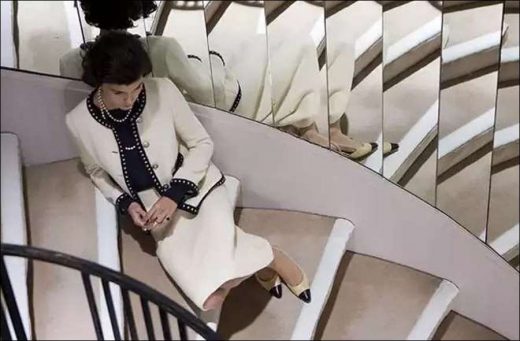The life story of a fashion designer like Coco Chanel is not limited to her designs.
The exhibition titled “Fashion Manifesto”, covering the career and creative designs of world-famous French fashion designer Gabrielle ‘Coco’ Chanel, opened its doors in London. Coco Chanel was not just a fashion designer, she was an iconic figure who shaped an era. But who really was Coco Chanel, who broke the mold? Let’s take a look at the world of this extraordinary fashion designer together…
coco chanel, life of coco chanel, fashion designs, the story of coco chanel, gabrielle bonheur, fashion manifesto exhibition, Etienne Balsan, chanel fashion, chanel perfummes, Victoria and Albert Museum
The legacy left behind by Coco Chanel, who brought a new perspective to fashion and changed a culture from top to bottom, has grown day by day.
Gabrielle Bonheur “Coco” Chanel, considered one of the 100 most important people of the 20th century, turned into an icon with her short hair, red lipstick and uncompromising attitude towards her own truths.
Coco Chanel, whose name is synonymous with the word “fashion” in France, is seen as one of the important symbols of the country. Chanel, which left its mark on the pre-World War I period and made history the use of corsets that “restricted” women, made a big impact with a sporty style that emphasized everyday elegance. Adopting a fashion approach that rejects standards as a motto, Chanel charted a very different path from her contemporaries.
Finally, the “Fashion Manifesto” exhibition, which is about the life and fashion legacy of Coco Chanel, was opened at the London Institute Sainsbury Gallery within the Victoria and Albert Museum in London, the capital of England.
Origin of the nickname Coco
But who is Gabrielle Chanel? Gabrielle Chanel was born on August 19, 1883 in Saumur, France. Born to street vendor Albert Chanel and Eugénie Jeanne Devolle, Gabrielle Chanel lost her mother at a young age and was left to an orphanage by her father when she was 11 years old.
Chanel, who learned to sew during the 6 years she stayed at the Aubazine orphanage, started working as a tailor and singing at the La Rotonde cabaret. She took her nickname ‘Coco’ from one of the songs she sang, Qui Qu’a Vu Coco?
In 1905, she met Etienne Balsan, who came from a noble family. When Chanel settled in the Balsan family’s castle, new doors gradually opened for her. Chanel opened a hat boutique in 1908 upon the recommendation of Etienne Balsan’s friend, Arthur Edward “Boy” Capel. After making a name for herself there for a while, she took a step that would change her life and moved to Paris.
Chanel, who slowly started to make a name for herself in the Paris fashion world, became a licensed hat designer in 1910 and announced that she opened her boutique called Chanel Modes at 21 Rue Cambon in Paris. After this date, it became popular around the world and, more importantly, it completely changed cultural life with what it produced.
Chanel, who managed to break away from the standard patterns drawn for women and make clothes that were once defined as men’s clothes, indispensable for women, was also the creator of many products used today.
The famous outfit that launched Chanel’s career
Oriole Cullen, curator of the “Fashion Manifesto” exhibition, said in an interview with CNN, “Most of the early pieces are more than 100 years old. But it is really fascinating to see the connections between them and the popular products we use today.” Touching on the importance of the piece dating from 1916, Cullen said, “This “The creation is the garment that truly launched Chanel’s fashion career. It is very simple, streamlined and of course made from the famous silk jersey fabric,” he said.
Answering CNN’s questions, Justine Picardie, author of the book “Coco Chanel”, stated that Chanel was a pioneer in fashion that focused on comfort and freedom of movement. Stating that Chanel’s work, which appeared on the cover of Vogue magazine in 1926, was described as “the dress that the whole world would wear” in the magazines of that period, Picardie said that this design formed the basis of the image of independence, strength and endurance of the modern woman in the “jazz age” identified with the 1920s.
For this reason, the highly anticipated exhibition resonated well beyond the fashion world. Tristram Hunt, Director of the Victoria and Albert Museum, said: “Chanel’s breaking of gender stereotypes in the early 20th century seemed very out of place for her time. “She was an extraordinary woman and her life forms part of the story of the exhibition,” he said.
Next Page: From humble beginnings to the heights of fashion.
Visits: 64




